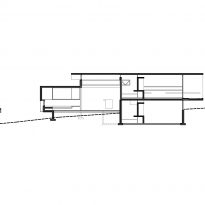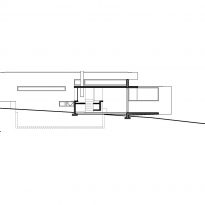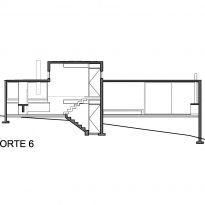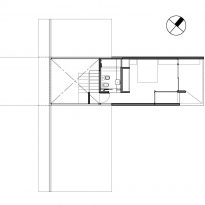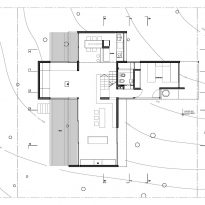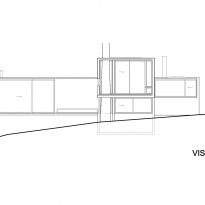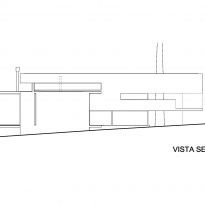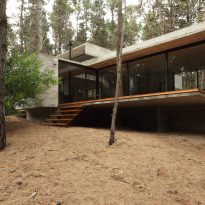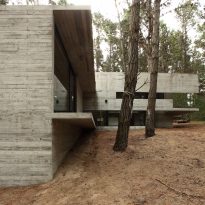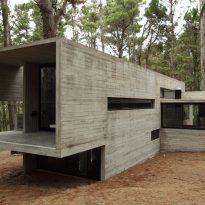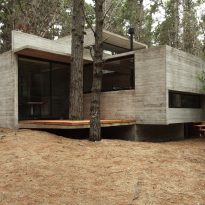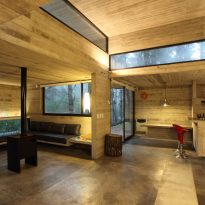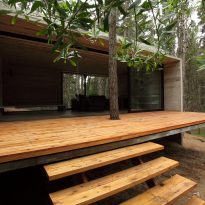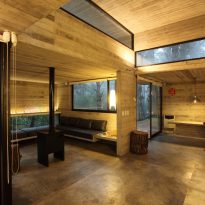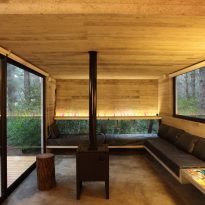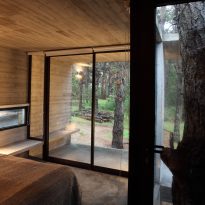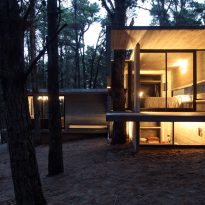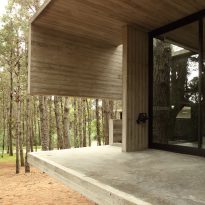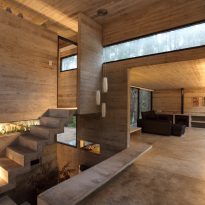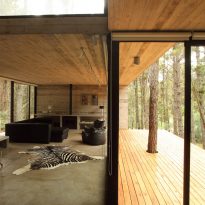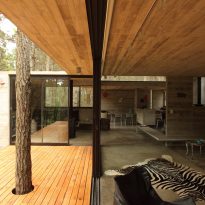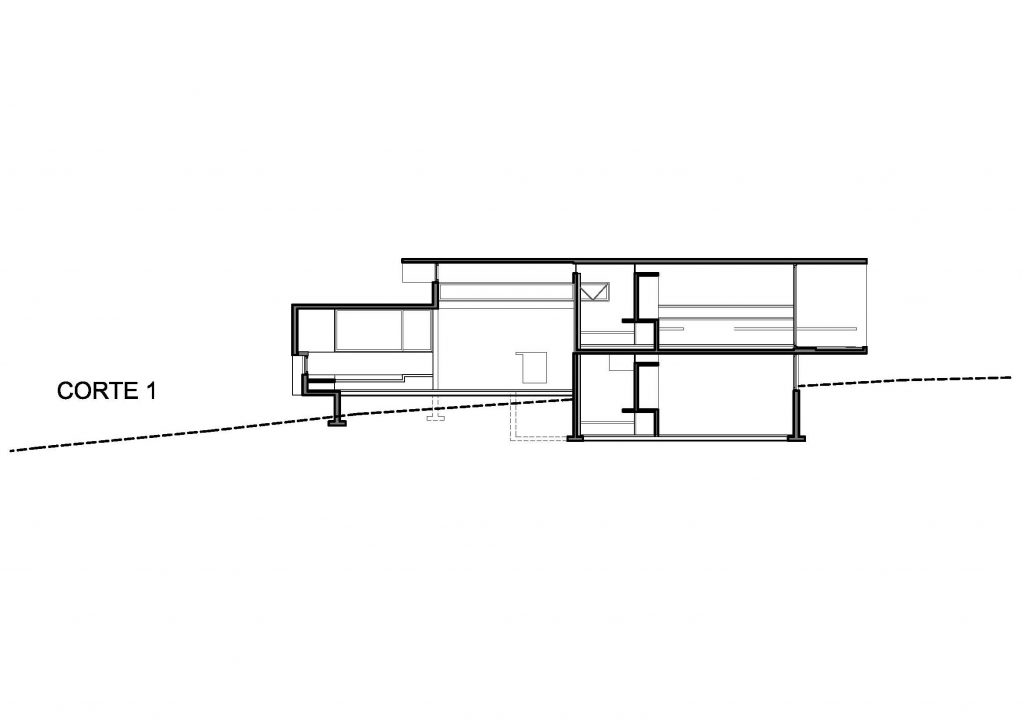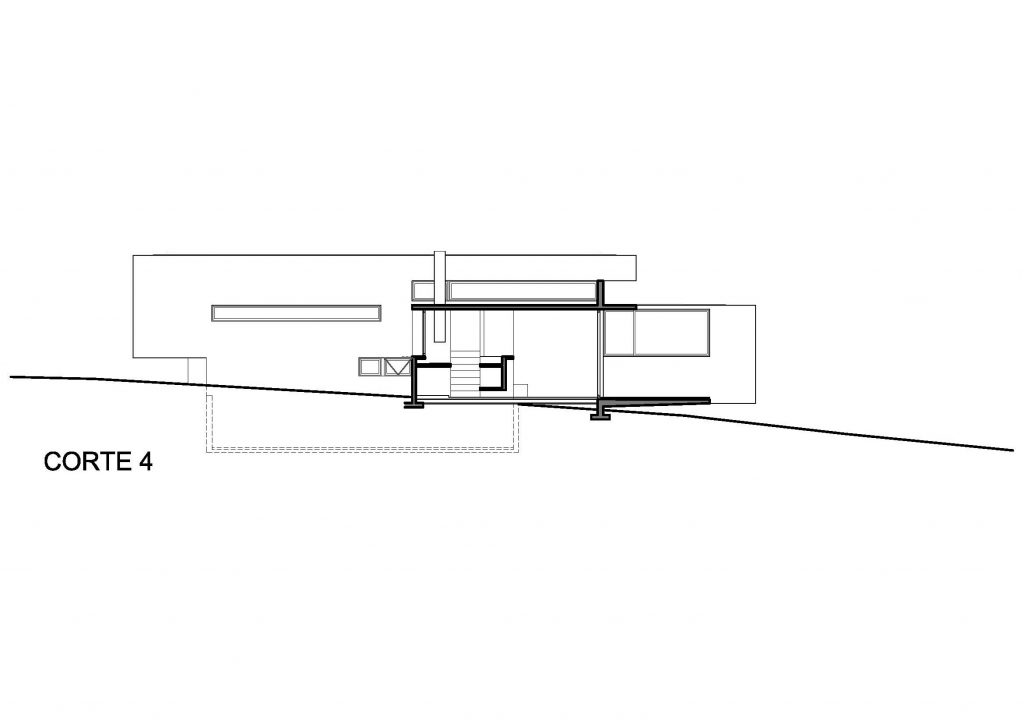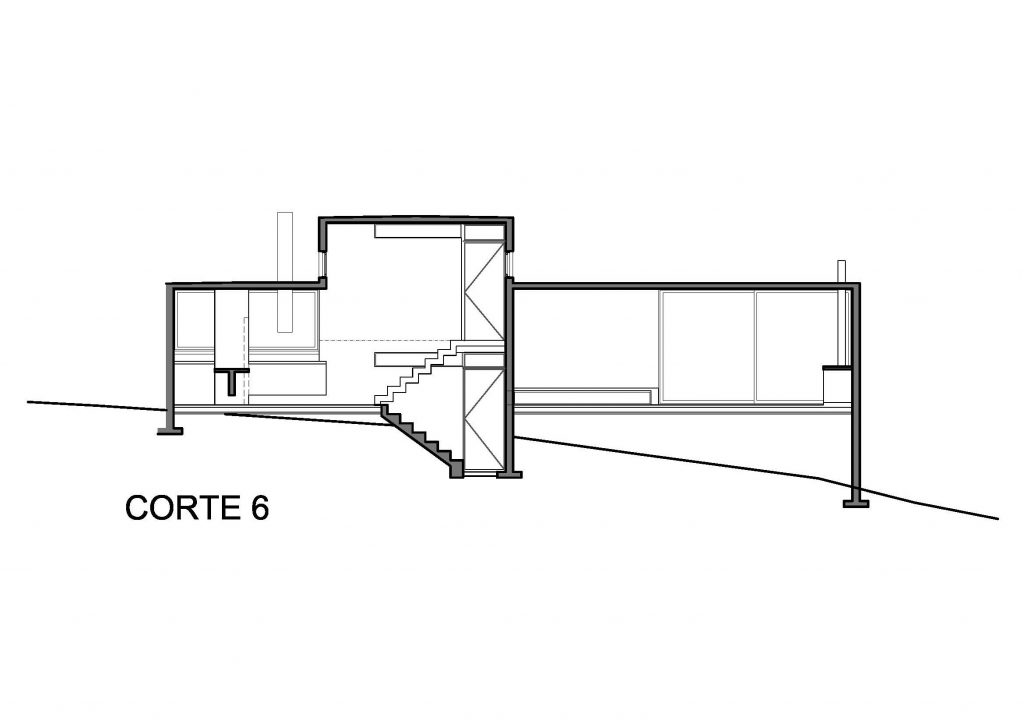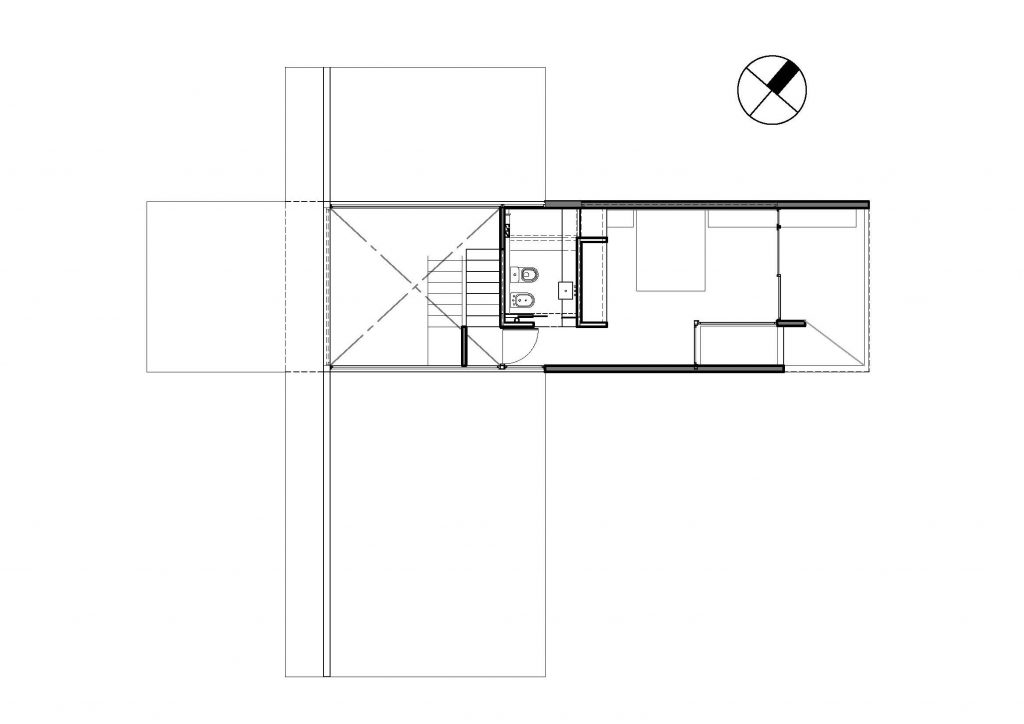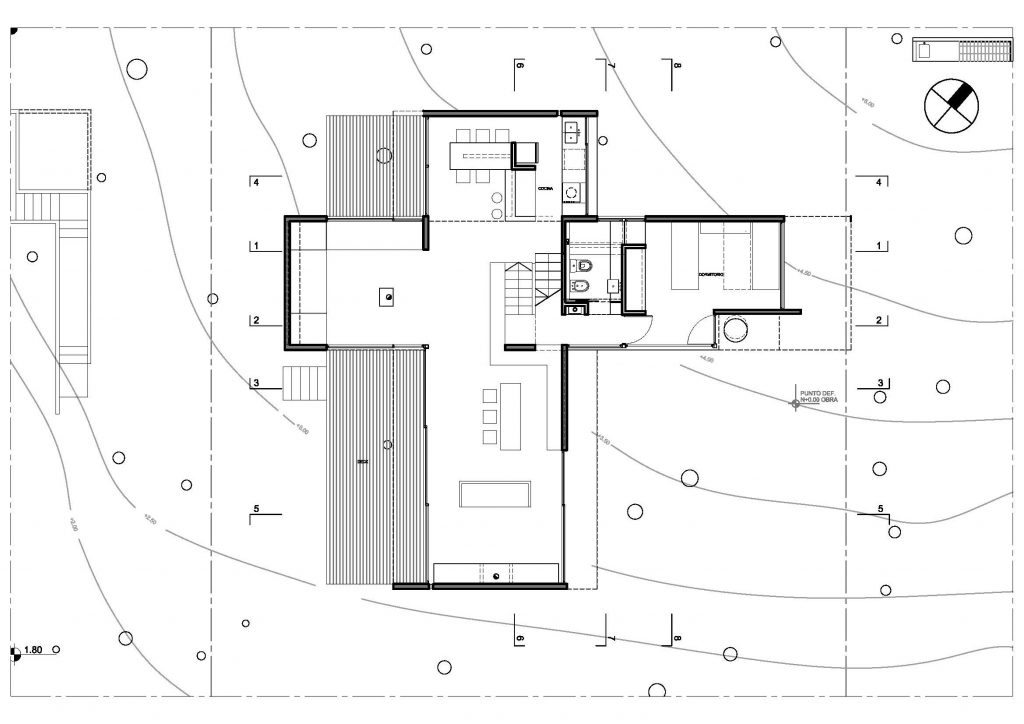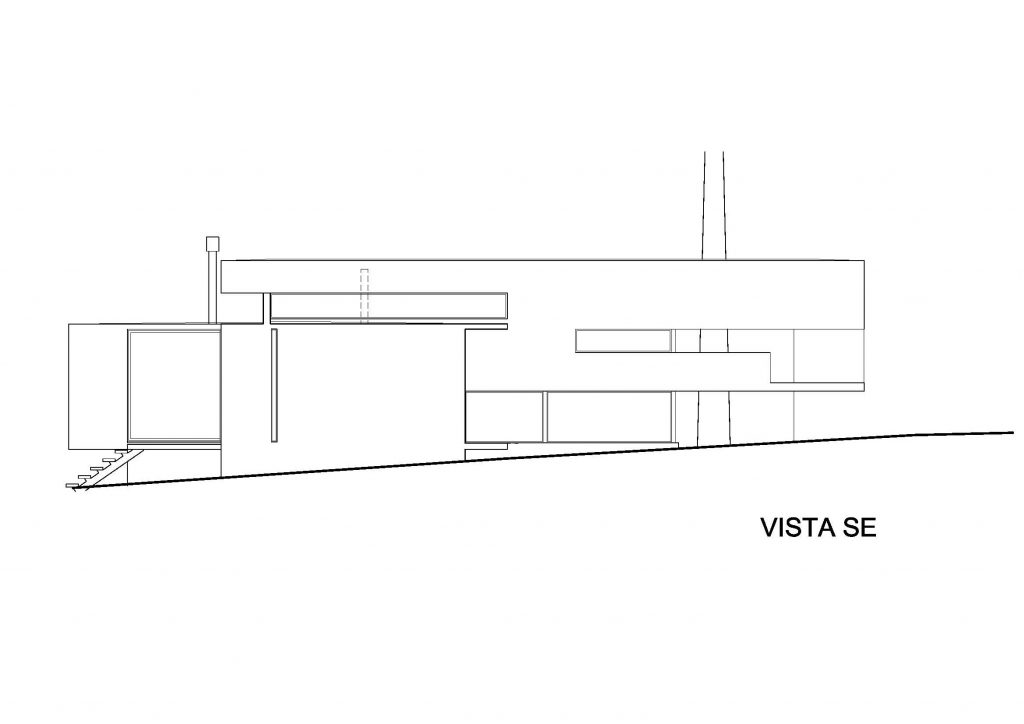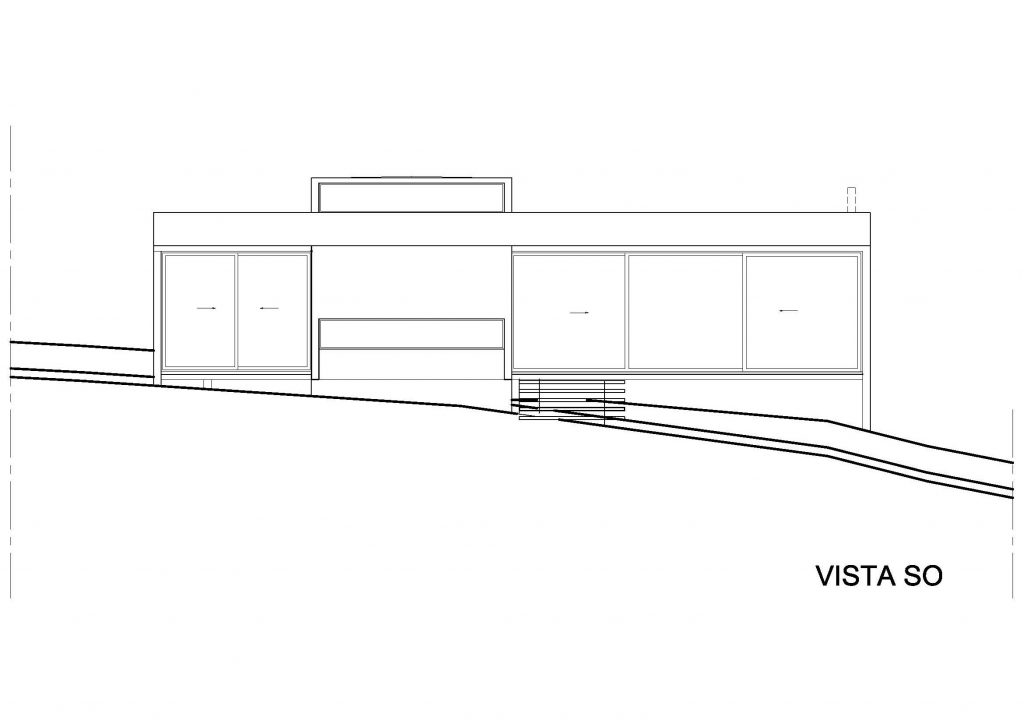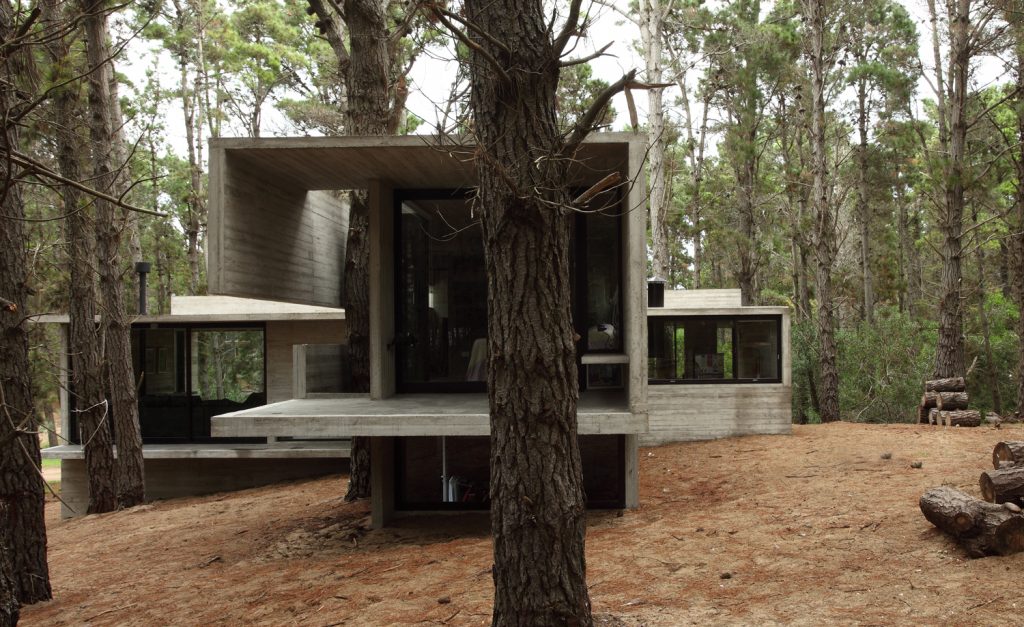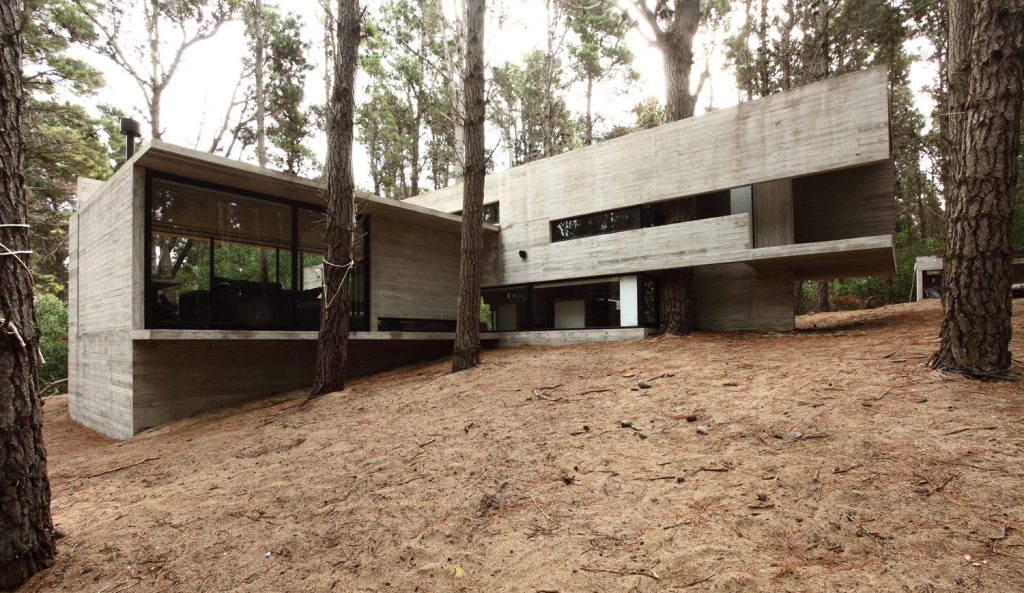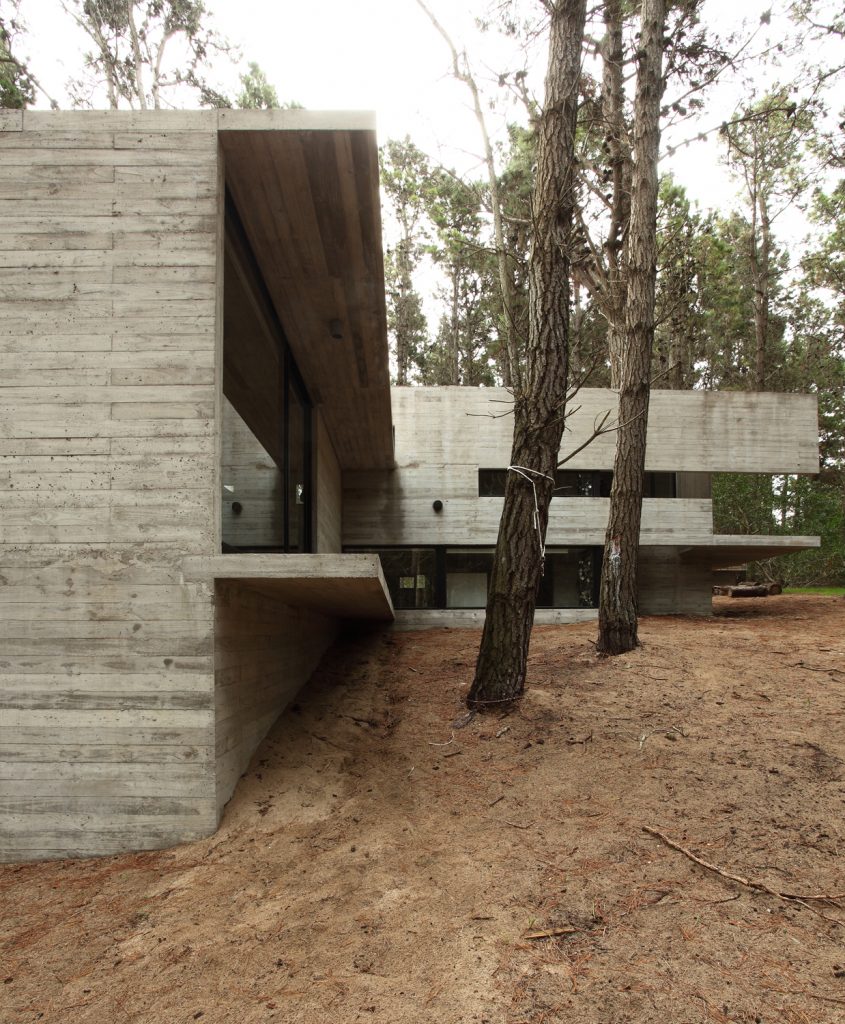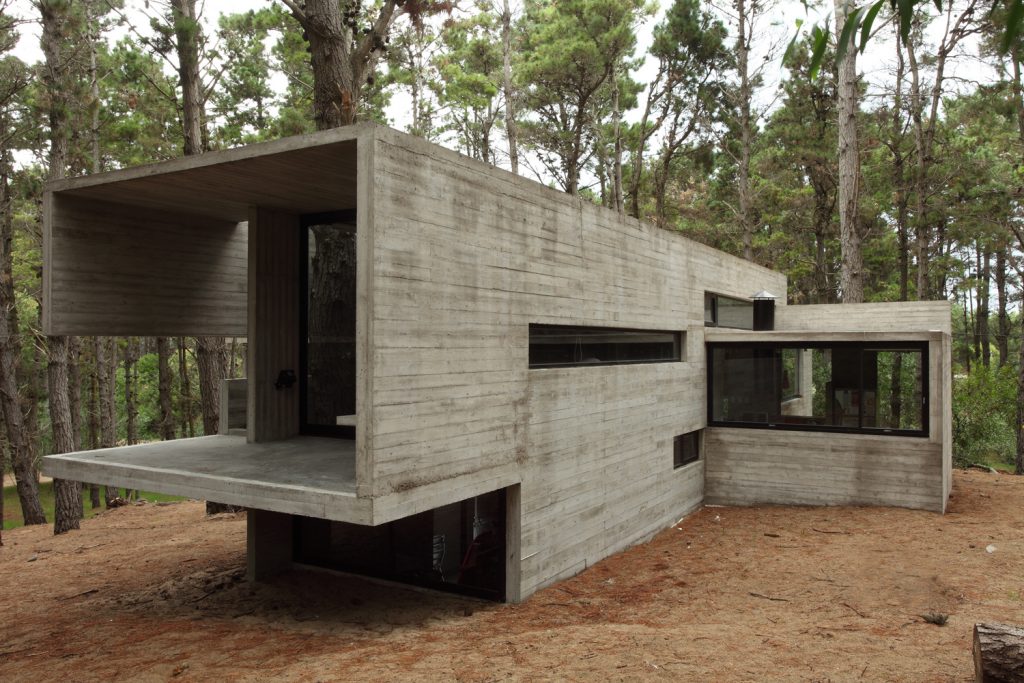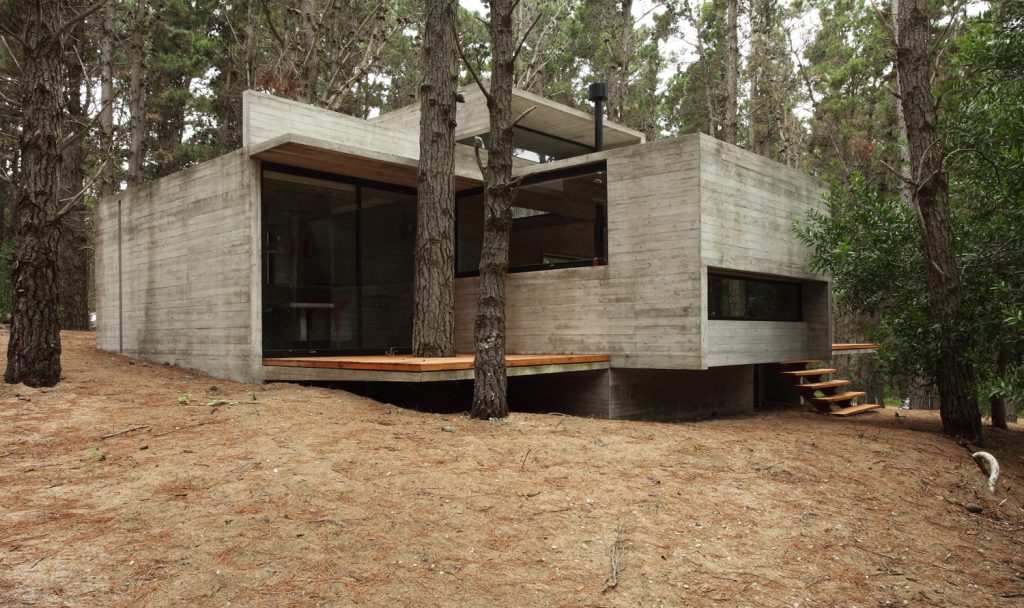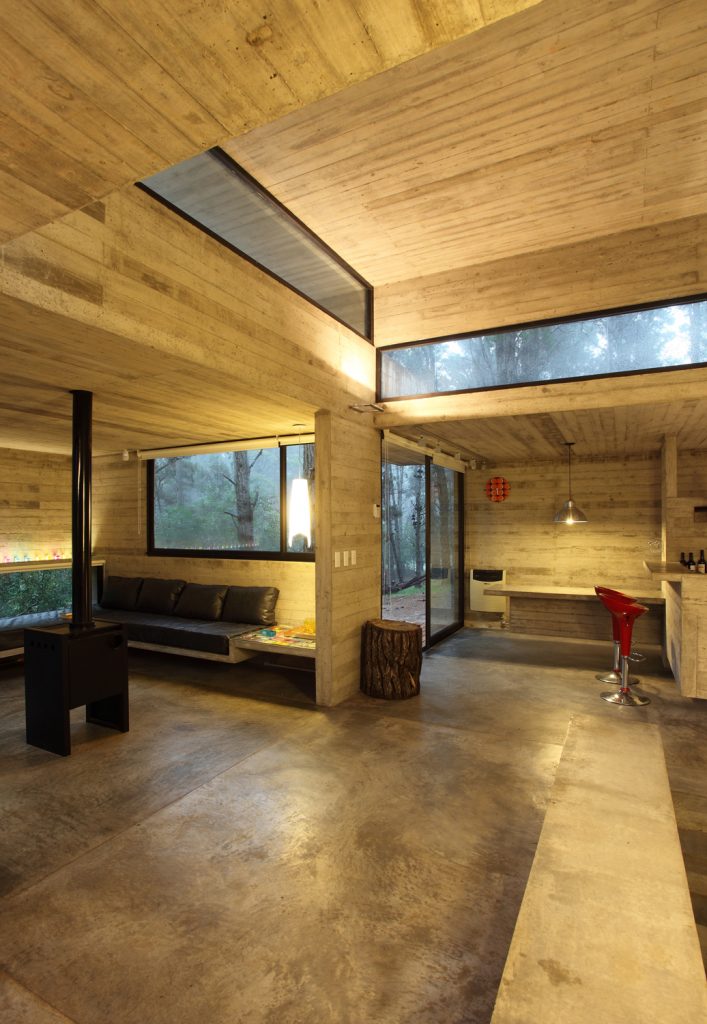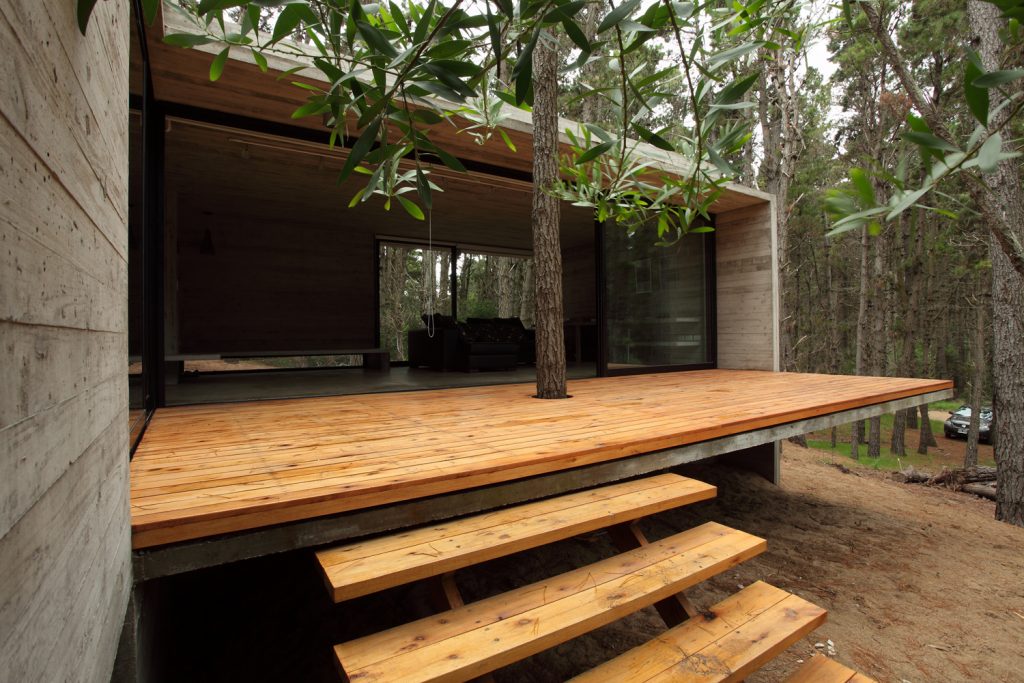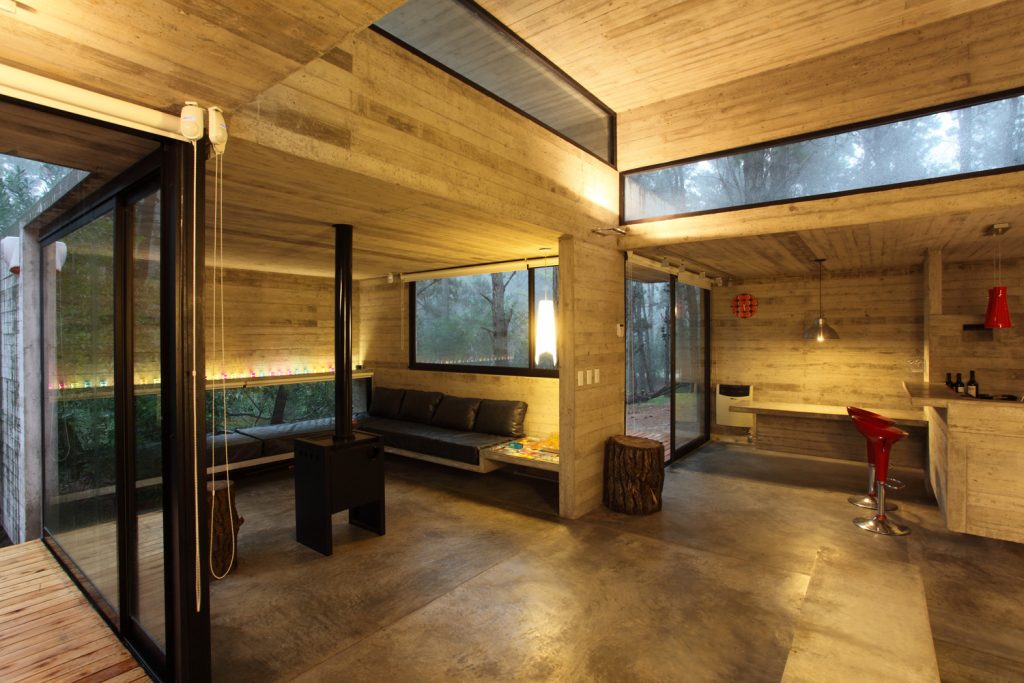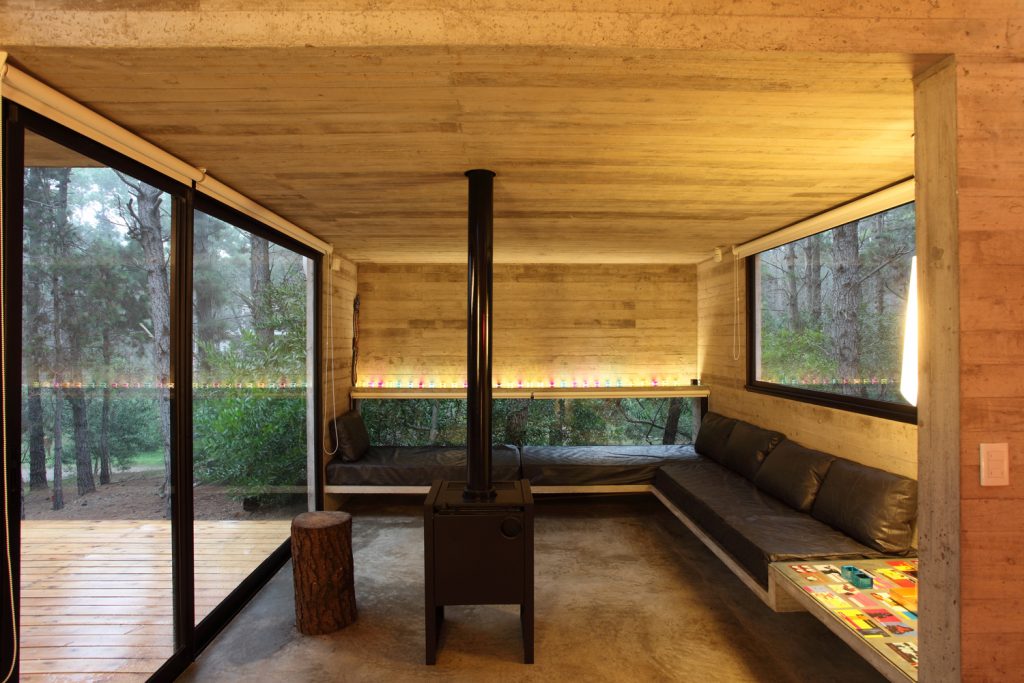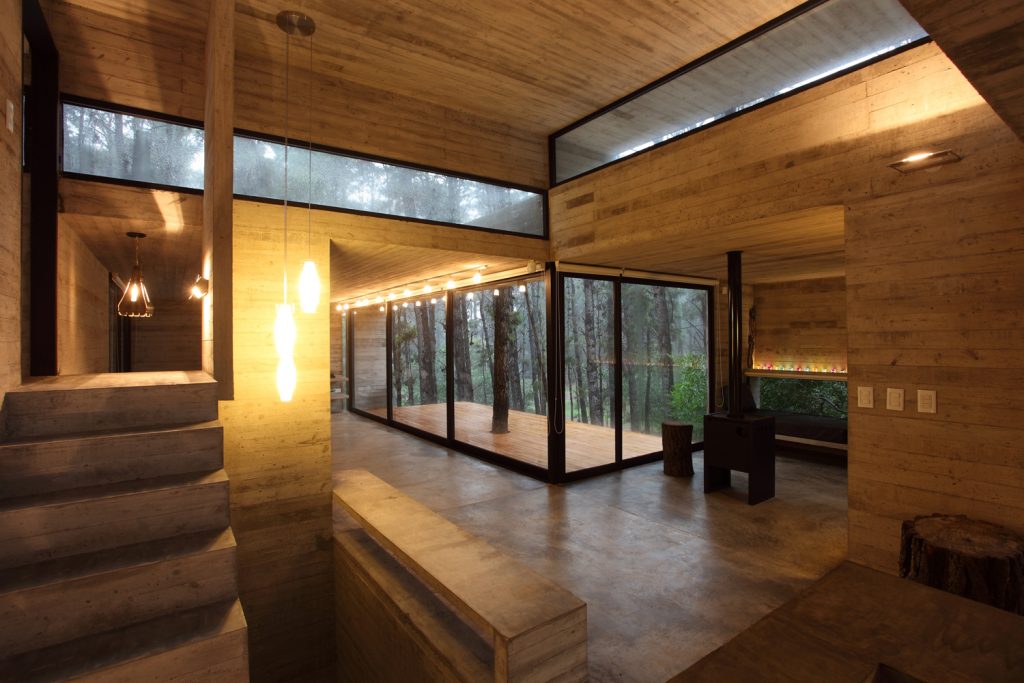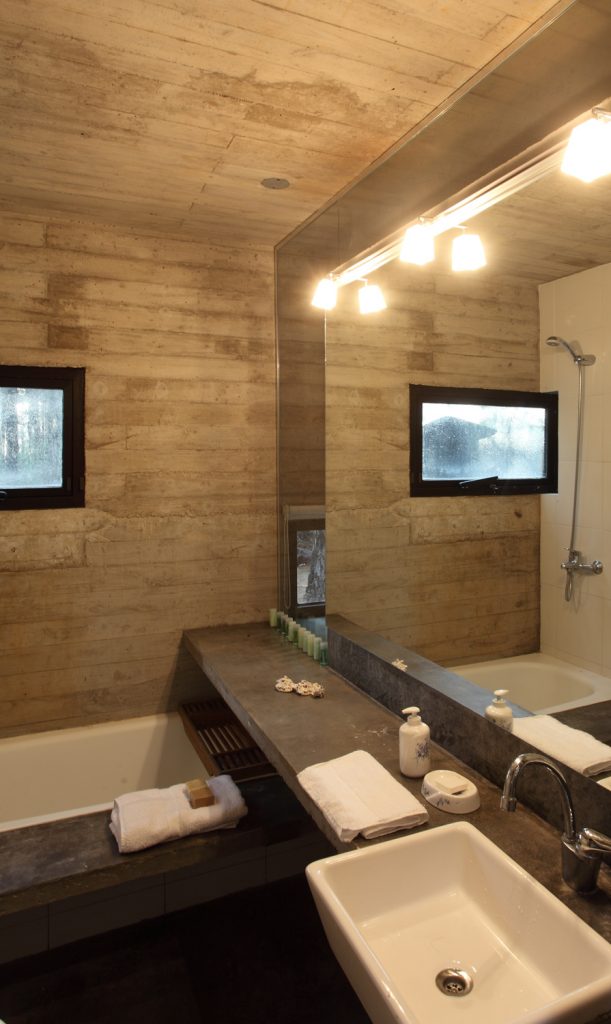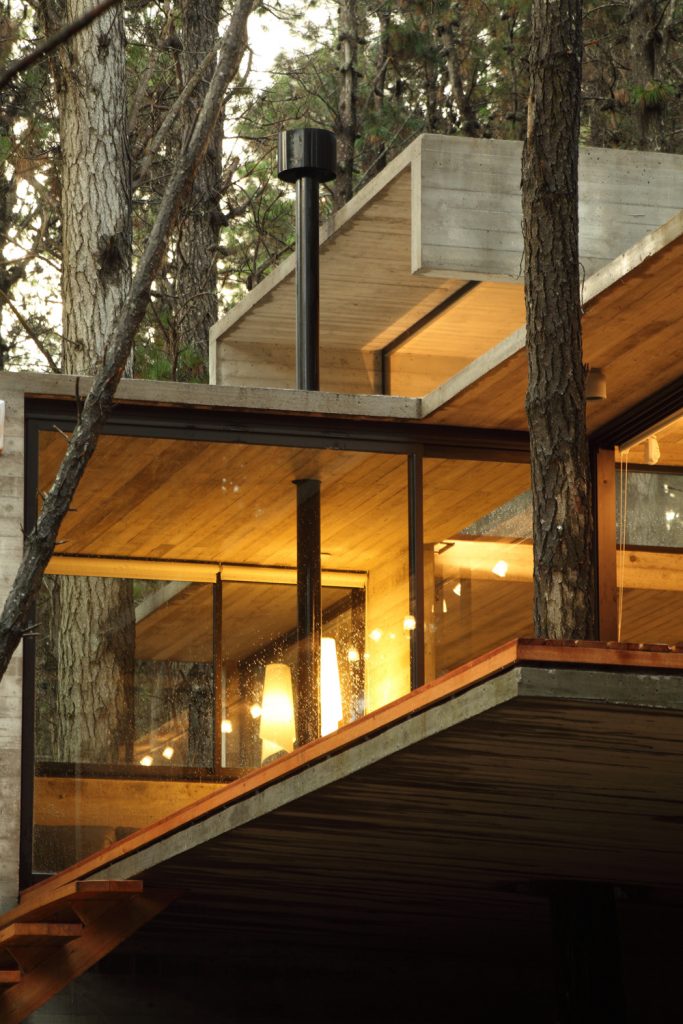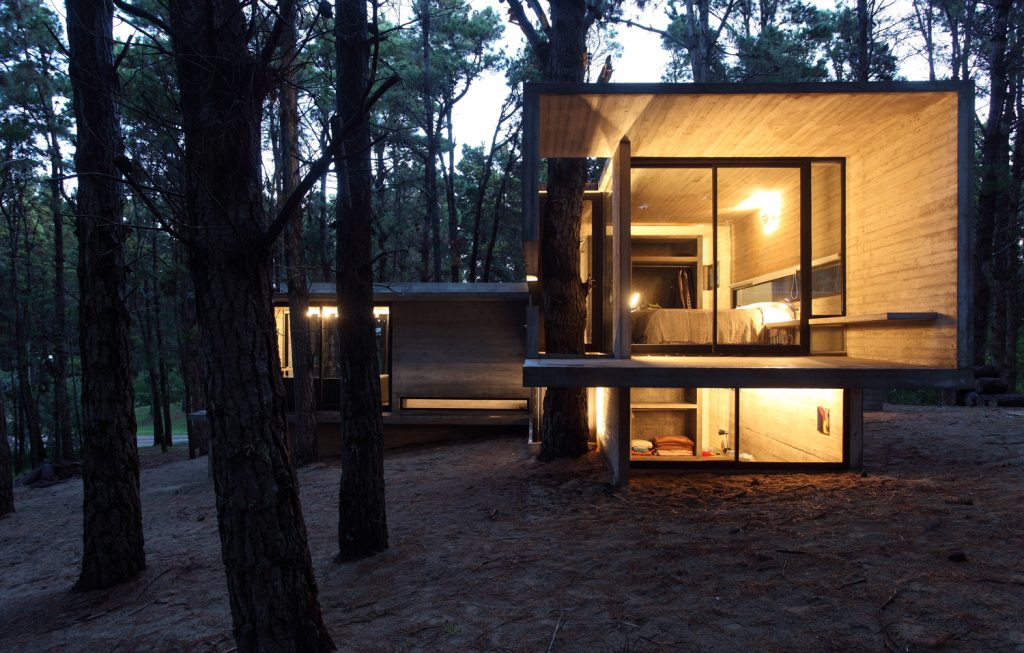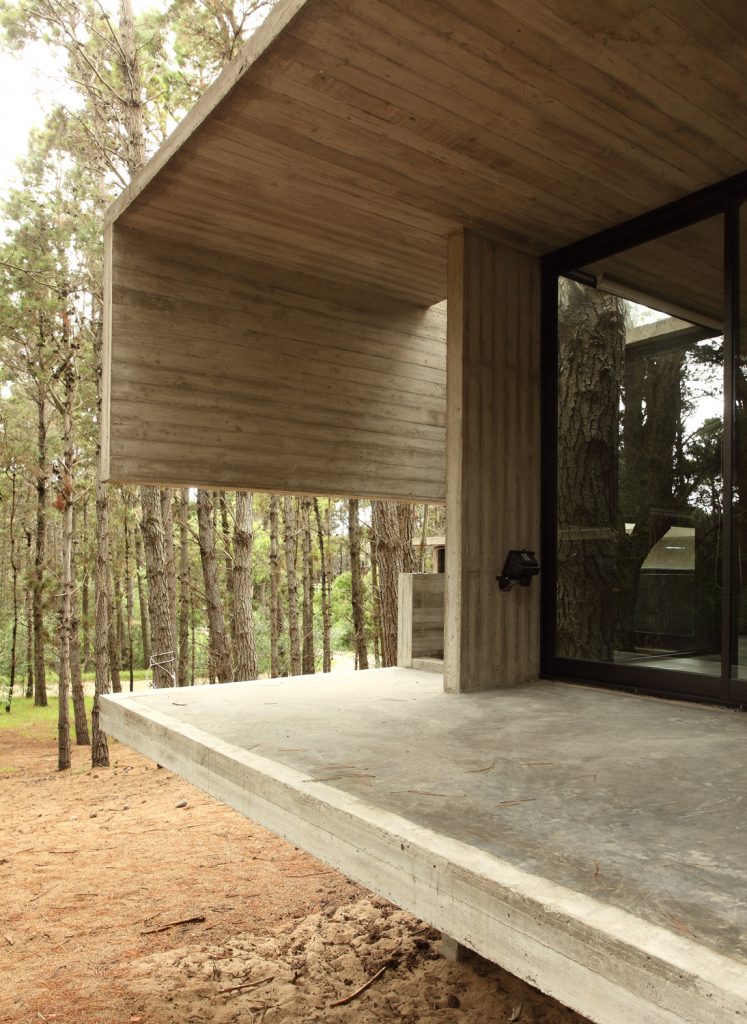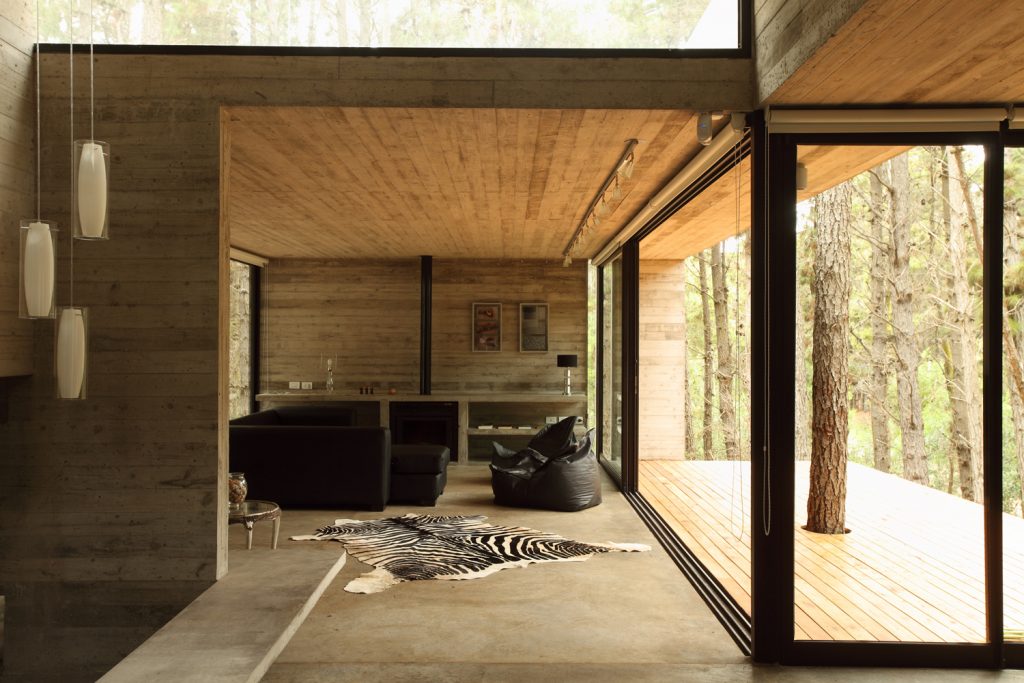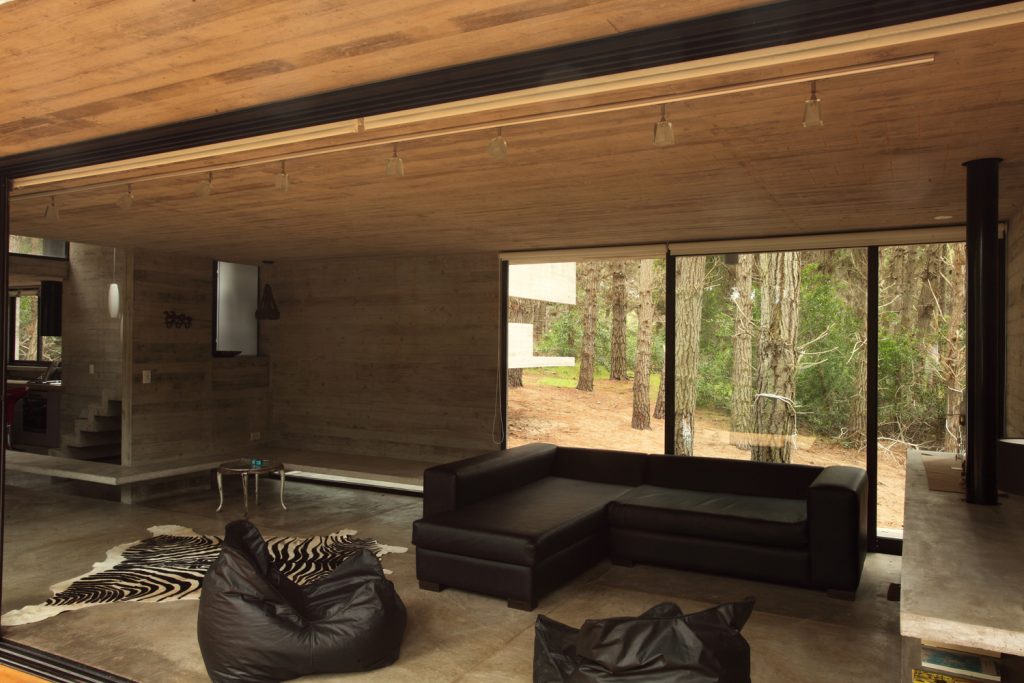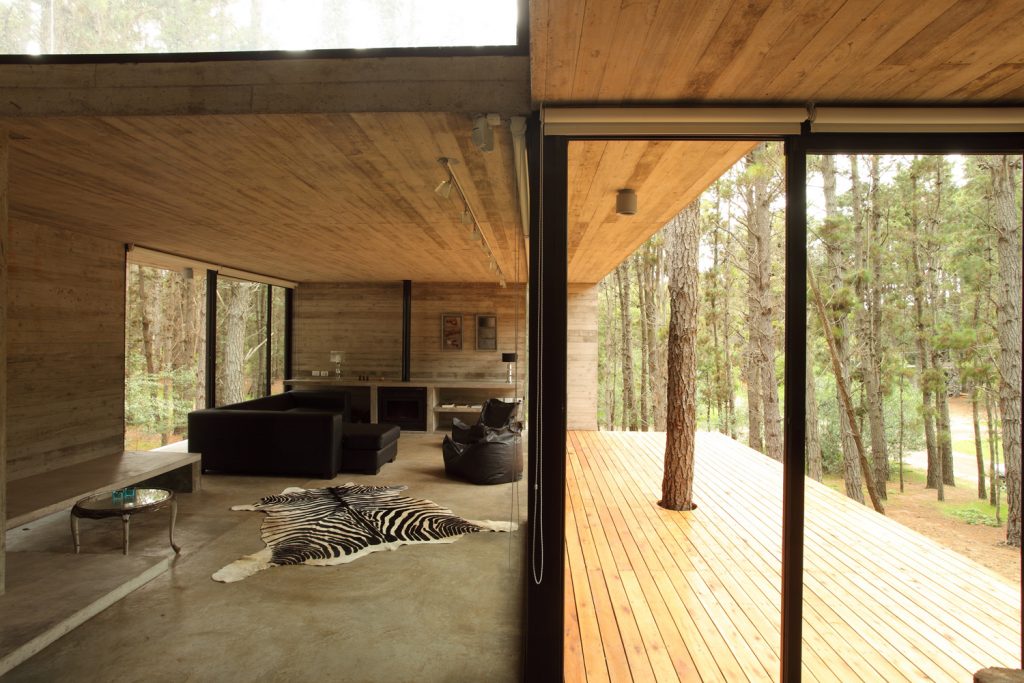JD House


Introduction
This book is the result of a process that begins with the construction in 2004 of a summer house in the forest of Mar Azul with the following assumptions.
BUILDING INTO THE WOODS
Propose alternatives that ensure the survival of natural environments
Mar Azul is a place we know for many years for that reason, when in 2004 built the first work we knew we had to intervene in a territory that despite its beautiful scenery never had a legal support to protect this heritage for the greed of which lotean with only one goal: make as land rent.
Nor has a code, understanding the logic of this privileged environment, regulated by solving the gap between the batching inappropriate and the possibilities of building without losing the environmental quality of the site.
This situation described is added as an aggravating the proliferation of a typology “typical house in a fantasy world, which is gradually” domesticating “the forest, still owner of a wild powerful presence. Operate on that site then assume its misalignment meant as a challenge and see, to where, the architects we can make a contribution alternative.
”’The response was the proposal of a minimal architecture resources, both material and formal, not only as an aesthetic choice but as an ethical principle of recovery of a more rational use of the various resources available.
This architecture should be incorporated into the landscape stripped willing to membership, seeking to integrate into the existing reality.”’For this to happen it is necessary “listening” to what the site communicates the first approaches should be free of prejudice regarding the it not only to capture data and therefore tangible and measurable qualifying, but that atmosphere that the place provides and that we can only understand if our eyes are free of preconceptions about it. This means to practice the exercise of “see first time. ”
Consider the data, letting those feelings overcome by providing the place and imagine himself as the capitalized project is essential to be able to fuse architecture and landscape.
We had practiced this year (almost as a professional service) Mar Azul vacationing on several occasions, so we evaluated the powerful presence of its forest landscape, the sensations that provide continual changes in time, but we also experienced the microclimate that provides : attenuation of the strong sea winds which occur beneath the trees, these provide constant shade from heat in summer while producing a very wet winter, which for us was crucial in making decisions to When planning, the fact that under the pine trees is reduced significantly the amount of light throughout the year.
We also knew that the forest does not require maintenance other than removing the dry vegetation, if not new species are introduced to break that harmony.
Making what the environment offers
Recognizing this particular climate was a deciding factor (along with the low budget available and zero maintenance in the house) of the aesthetic-constructive decisions that defined the work.
The need to capture the light led to conceive the first work as a “semi-covered” and then resolve it with large panes of glass from the inside make possible to view in all directions and from the outside reflect the landscape, the house blends with it.
The need to accelerate time to implementation of the work and avoid the after we decided to build with exposed concrete. The shadow prevailing on the other hand allowed us to use this material because it provides sufficient thermal protection from spring to late autumn. Preparation for winter was not too important (although of course was intended) because its use is limited because of their status summerhouse.
The insulation waterproof concrete was resolved with a very compact and with a study of how to bound the evacuation of rain water is carried out very quickly.
Use of available resources wisely
The expressive quality of exposed concrete and its resistance and waterproof properties already mentioned, made superfluous any surface finish, achieving a low cost of implementation at the ends without the need for future maintenance.
On the other hand the color and texture of concrete formwork made with wooden planks was a forceful presence and mimetic at a time, allowing the work to be expressed in harmony with the landscape.
Is short, an envelope of only two materials – concrete and glass – solves the integration with the landscape and responds to formal issues, structural, functional, finishing and maintenance.
With the same approach the resolution of the outdoor activities was the result of performing the operation on the lower atmosphere. It avoided all types of landscaping not only for the convenience of not keeping it to avoid leaving unnecessary limits expressed in a landscape that are not very built, or areas contrasting with the landscape characteristics of this privileged environment.
We like the strong homogeneity of coniferous forest only broken from time to time for some acacia and our pampas grasslands are also the dominant vegetation in the dunes near the sea.
Several houses, some questions
The proposal that our study has been doing in the forest of Mar Azul, as concerned in joining this environment that originates, and so far from the stereotypes of the place, has found great acceptance.
Several commissions of homes with the express request of repeating the same solution constructive and aesthetic value of the decisions on a more relaxed use of housing, lack of maintenance and construction.
This is certainly very gratifying for us but in turn we face a series of questions that become food for thought in each new order. Let them raised is one way to begin to tackle it.
We wonder: If the proposal is submitted to both functional environmental unit how to meet the design requirements, use and maintenance of principals, it is valid to seek a new solution without justification other than to try something different, betting only New?
If instead we choose to continue to bare concrete houses is it licit to produce changes in appearance such as by using a phenolic formwork, manipulating the surface termination with special finishes or use colored concrete? “All these procedures are not purely decorative maneuvers that go against the principles of austerity and simplicity that gave rise to the proposal?
”’Repeat this motion for materiality as a prototype re-worked with every order they belong to the landscape and the different way of living does not it seem logical and ethically correct?
“That would then be the challenge of each new project? “Focus on adapting this prototype to the specific uses of each client and the particularities of their environment? Insisting “increasingly force – assisted by the significance-that what is built there can not break with the unit representing the forest landscape? “Insisting on finding ways to transform every home” nest or burrow (1 )”?”’
(1) term used by the arch. Felipe Uribe to refer our houses of Mar Azul at number 17 of the magazine 1:100)
With these questions face the‘JDHouse. ”
The place
The 20m x 30m ground on which we should intervene is well forested with pine trees of great size.
Has the peculiarity of his forehead is very high regarding the level of the street, although this complicates the resolution of access to the site, offers the advantage that the house so high, is very little exposed to the eyes of those who walking along the street and it was also possible to imagine that from the inside could be found overlooking the landscape above the neighboring buildings.
Besides the difference in level with the street across his forehead, the lot has a slope diagonally from the bottom to the same of 3.00 m.
The commission
The order of the principal was a house to be used for much of the year, two bedrooms and two bathrooms, one en suite, but with a social area large enough to build spaces for different uses as it is usual to receive many friends.
Also required, sometimes, a social sector in this area could be transformed into place to sleep.
The kitchen should be integrated in the social area and stressed the need for generous outdoor expansions. The total area should not exceed 150 m2.
Proposal
The particular highlight of the lot, privacy resulting from the high of it on the street, overlooking the forest free of neighboring structures and the particular program required, are the issues that are unique to this house with a constructive proposal similar aesthetic the other built by the studio in Mar Azul.
The housing proposal was conceived as two pure prisms, located in a clearing among the trees of different heights, which intersect at right angles and media levels. The significant slope of the land was used to hide part of the program required, thereby reducing the presence of the buildings. With this arrangement of volumes was achieved to give the house a variety of living without losing their independence required to use between them.
All areas of the social area are linked through large openings to the outside terraces resolved with wooden decks and large master bedroom has a terrace deck expansion.
Functional organization
You reach the main floor through a deck raised above the natural terrain, which develops along the longest side of this plant, so that by opening the sliding carpentry achieved seamless integration between interior and exterior.
This level of access is a unique space where different uses are defined by differences of heights produced by the intersection of prisms and sectorisations with concrete walls.
In this way the space is entered with a sector to be in front of the fireplace and with a bench seat intended to be used for a casual meal on a low table.
From this sector can be seen in front of the dining room with its expansion to another terrace, the kitchen to it through a series of concrete walls in addition to resolving the equipment (low countertops, a bar and table), away from direct views the field of kitchen work.
Available to the side of another room, settled about a free salamander, which can be converted into bedroom.
In the center of the plant, the intersection of the two prisms, creating a double height space where the main means both the stairs that lead levels to the bedrooms, such as lighting effects and the vision of the landscape that is obtained by the difference high volumetric or through large openings.
Down and half buried in a very quiet is the general bathroom and a bedroom and takes up isolated from the rest of the house, the master bedroom with private bath that extends outward in a semi-covered terrace.
Both bedrooms are pierced by a pine tree, years, very robust, they did not want to overthrow.
Construction
The house is built with three basic materials: exposed concrete, glass and wood on the outside deck.
Slabs of different volumes and partitions supported by concrete beams seen inverted and finished with a minimum slope to occur quickly rainwater runoff.
H21 concrete was used with the addition of a fluidizing for this mix with little amount of water on setting, be very compact and does not require sealing.
The few hollow brick interior walls are finished in cement grinding, floor cloths is also divided by cement grinding plates of aluminum.
The openings are of dark bronze anodized aluminum. The heating system, since there is no natural gas in the area, was resolved with a system that combines salamander, bottled gas stoves and electric heaters.
Furniture
Except for the beds, couches and chairs the rest of the equipment of this housing is fixed in concrete.



